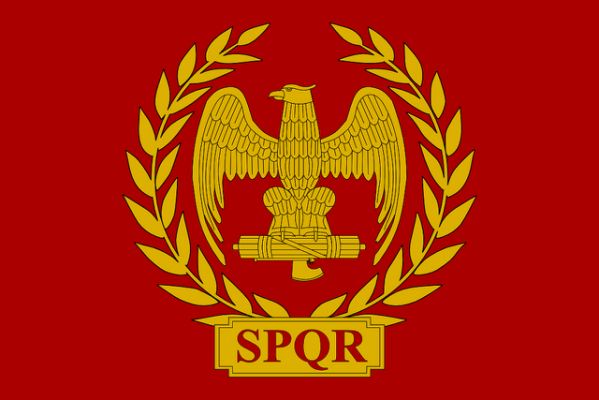
If you want to catch up on the first several articles, you click here to read the Introduction, click here to read about the Roman system of roads, click here to read how Greek became a universal language., click here to read about the development of the Septuagint, click here to learn about the rise of Herod and Pilate, click here to see how Greek philosophy paved the way for the gospel, click here learn more about Christian persecution, click here to study Caesar worship., click here learn about the development of the Pharisees and the Sadducees, and click here to see more about the development of the Sanhedrin and the Synagogue.
The most famous piece of Latin poetry is the epic the Aeneid by Virgil. It tells the story of the Trojan prince Aeneas who leads his city’s refugees in search for a new home. By the end, they establish Rome. In the middle of the tale, Aeneas visits his dead father Anchises in the underworld. There prince Aeneas gets some advice that may be one of the most famous quotes form any Roman poem. Anchises says, “Roman, remember by your strength to rule the peoples of the earth – for your arts are to be these: to pacify, to impose the rule of law, to spare the conquered, to battle down the proud.” This line is significant because Virgil says once and for all how the Romans truly see themselves. Let the Greeks have their art and the Persians their sciences, what we Romans do better than anyone else ever is to establish order.
Roman Peace
Order means more than law and order, although the Romans enjoy a proficient judicial system. Order in the Roman world is best expressed with Pax Romana, or Roman Peace. It’s the period that begins with Augustus and continues near two-hundred years until the end of the reign of Marcus Aurelius (161-180 AD). He is the fifth of what history has called the “Five Good Emperors.” The four immediately before him are Nerva (96-98 AD), Trajan (98-117 AD), Hadrian (117-138 AD), and Antonius Pius (138-161 AD).
It’s a time of relative peace and prosperity for the empire. Rome’s borders are at their broadest and for the time are somewhat peaceful. The population of the Roman Empire at its zenith is about 70 million people, and it is here during the Pax Romana. But the wheels come off with the reign of Commodus (180-192 AD), son of Marcus Aurelius. Things go badly with haste in his days and are followed by unrest where five different men serve as emperor in the same year 193 AD. The rough slide into the 3rd century where Rome almost fell show everyone there is no more Pax in Romana.
Before Augustus, the Republic dies a slow death of ten civil wars with a hundred-year span. Seneca first uses the term Pax Romana in 55 AD. During this time there are three Jewish wars, two Parthian wars, two Dacian wars, the Kitos War, and a year of civil war following the death of Nero. Externally, the Romans struggle with the ambush at Teutoburg Forest in Germania and Boudica’s rebellion in Britannia. And there is the persecution of Christians going on at this time, most severe is by Nero, Domitian, Trajan, and Marcus Aurelius, the last two of whom are considered Good Emperors if you recall. This peace declared by Seneca is more propaganda than performance. Still, when considering the before and after, those histories are some stale and moldy bread that hold together this somewhat meaty time of comparative peace into a fairly satisfying Pax Romana sandwich.
A Separate Peace
To be fair, it may be impossible to hold absolute peace over such an expanse. Rome actually does a good job to create this relative peace and prosperity for as long as she did. This stability of the early empire makes it easier for the gospel to go into all the world. The 1st century apostles and prophets will not be able to travel quickly and safely no matter what conditions the roads are in if there is civil unrest in every corner of the realm. Rome holds a lid down rather firmly, for a while – and when it boils over, it boils over.
Rome crosses over from a Republic to an Empire for two main reasons: to have more land and more people to tax. They need the land as pension for retiring legionaries. They need the tax money to pay for more soldiers, but also to pay for the party back home. There is one thing rich Romans love to do and that is party. The rest of Italy is as poor as Job’s turkey. They spread their borders to have more tax money to pay for the party back home. This is one of the reasons the Jews are so reticent to pay these taxes. But this creates a vicious cycle that ends up consuming itself. More land means more soldiers to defend the borders, which means more taxes to pay them and land to give them, which means you need more soldiers. In time, the Roman army takes on barbarian mercenaries and then allowing barbarians to serve with the promise of Roman citizenship. This broadened the bank of citizens but weakens the army, which means you need more soldiers. Rome did not fall as much as she imploded. The barbarians are simply the closest ones to take advantage when it becomes their fullness of time, shall we say.

Pingback: History Between The Testaments: Part Twelve – Roman Slavery | This Is My Father's World